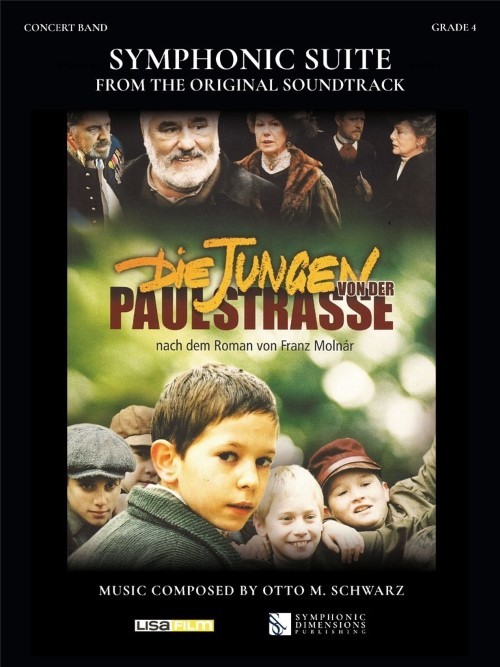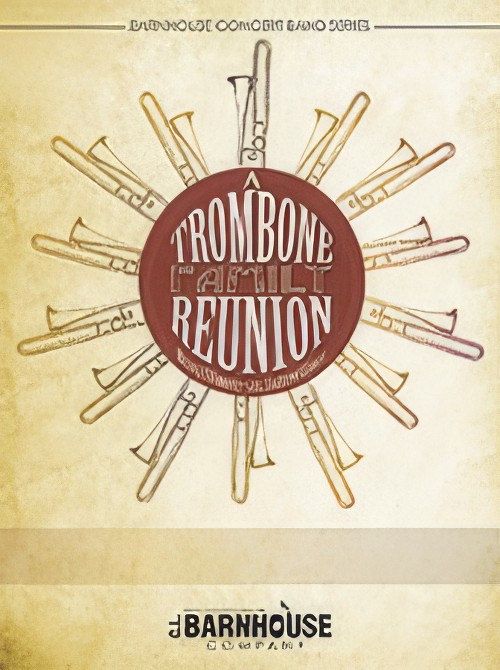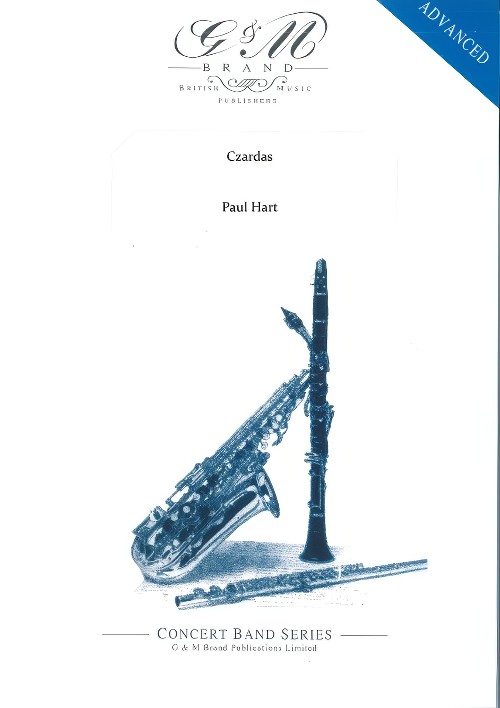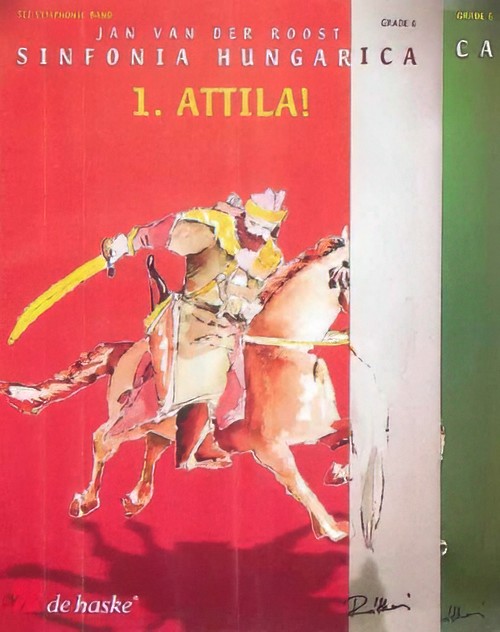Results
-
 £104.99
£104.99Intermezzo - Franz Schmidt
The Intermezzo from the Romantic opera Notre Dame, based on Victor Hugo's novel The Hunchback of Notre Dame, is in fact Franz Schmidt's best-known work. The charm of this lovely composition lies in its Hungarian and Romantic influences. Wil van der Beek's sensitive arrangement does justice to this great work, putting Franz Schmidt's masterpiece back in the spotlight once more!
Estimated dispatch 7-14 working days
-
 £122.50
£122.50European Journey
Lszl Zemplni, the author or reviser of a large number of pedagogical volumes published by EMB, has this time arranged European folk songs for young band. The following songs feature in the volume: "La' doch meine Jugend" (German), "My native land" (Irish), "Ah mon beau chteau" (French), "Kom, skal i klippe" (Norwegian), "Moj llokumja me sheqer" (Albanian), "Ma come balli bella bimba" (Italian) and "Az olhok, az olhok" (Hungarian). The pieces can be performed as a coherent series or separately, and conductors can select from them to form 2-, 3- or 4-movement groups.
Estimated dispatch 7-14 working days
-
 £94.99
£94.99Czardas (Xylophone solo) - Monti
Vittorio Monti was born on January 6, 1868 in Naples (Italy). His musical education (violin and composition), he enjoyed at the conservatory there. Around his 30's Monti went to Paris. He earned a living as a conductor and wrote several ballets and operettas. In his last years, Monti died in 1922, he devoted himself to teaching and composing. His famous "Czardas" has made his name known even today. Initially the czardas was a Hungarian folk dance , but after the mid-nineteenth century it was even a dance for the upper-class. Czardas begins with a slow introduction, the Lassan (slow and sad), and then the fast part, Friska, follows. Czardas is not, as somany people think typical gypsy music.
Estimated dispatch 7-14 working days
-
 £94.99
£94.99Czardas (Clarinet solo) - Monti
Vittorio Monti was born on January 6, 1868 in Naples (Italy). His musical education (violin and composition), he enjoyed at the conservatory there. Around his 30's Monti went to Paris. He earned a living as a conductor and wrote several ballets and operettas. In his last years, Monti died in 1922, he devoted himself to teaching and composing. His famous "Czardas" has made his name known even today. Initially the czardas was a Hungarian folk dance , but after the mid-nineteenth century it was even a dance for the upper-class. Czardas begins with a slow introduction, the Lassan (slow and sad), and then the fast part, Friska, follows. Czardas is not, as somany people think typical gypsy music.
Estimated dispatch 7-14 working days
-
£113.30
Rumanian Folk Dances - Béla Bartók
Bla Bartk (1888 - 1945) showed from the beginning of his career an interest in popular music. He began studying music at the age of five and eventually focused on composition and piano. He collected a lot of popular songs, especially during his studies in Hungary, but also music from Romania and Slovakia. This had a lot of influence on his style. In his compositions, Bartk uses many Hungarian popular themes and rhythms, and even his own original works always refer to the same rhythmic and melodic folk character. At the beginning of the twentieth century, Bartk detached himself from romanticism and began to delineate his style on harmonic procedures based on diminished and augmented intervals, on bitonality, and on marked percussiveness, characteristics that are at the core of popular music.The Romanian Dances are a collection of seven folk dances, originally composed for piano (1915, the first six) and then transcribed for a small symphonic orchestra (1917). Of purely modal language, like almost all Bartk's music, each dance comes from a different area of Romania (Stick Dance, Sash Dance, In One Spot, Horn Dance, Romanian Polka, Fast Dance of Belnyes, and Fast Dance of Nygra).
Estimated dispatch 7-14 working days
-
 £122.50
£122.50Die Jungen von der Paulstrasse, Symphonic Suite from (Concert Band - Score and Parts) - Schwarz, Otto M.
In 1910, the novel Die Jungen von der Paulstrasse (The Boys from Paulstrasse) was published, written by Ferenc Molnar, probably the most important Hungarian playwright of the 20th century. In 2004, film adaptation of the novel was released, and Otto M. Schwarz wrote the music for the 90-minute German-language version. The Symphonic Suite is a compilation of various main themes from the soundtrack.Duration: 8.00
Estimated dispatch 7-14 working days
-
 £78.00
£78.00A Trombone Family Reunion (Trombone Trio with Concert Band - Score and Parts) - Fillmore, Henry - Glover, Andrew
Between 1908 and 1929, Henry Fillmore composed a series of fifteen novelty pieces featuring the trombone section with band. These became collectively known as "The Trombone Family," with names and subtitles connecting them in sort of a musical genealogy. The three most popular family members, "Lassus Trombone," "Miss Trombone," and "Shoutin' Liza Trombone" join together in a whimsical way for "A Trombone Family Reunion," along with some "shirttail relatives" depicted by famous trombone excerpts from the symphonic repertoire. Included are quotations from "Blue Bells Of Scotland," "Symphony No. 4" by Tchaikovsky, "Tannhauser Overture," "Second Hungarian Rhapsody," "Prelude to Act III of Lohengrin," "Hallelujah Chorus," "Ride of the Valkyries," "Turkey In The Straw," and a few other surprises. Great fun! Duration: 3.30
Estimated dispatch 7-14 working days
-
 £104.95
£104.95Czardas (Concert Band - Score and Parts) - Hart, Paul
Some time ago Charles Hine, a dear friend, asked me 'Isn't it about time you wrote a Czardas?' It wasn't such a silly idea. I'd studied violin as a child and having learnt numerous show pieces in that style I felt quite at home with the genre. Later in my youth I was lucky enough to work occasionally as accompanist to a lovely lady & singer Eve Boswell, who was partly Hungarian, and was generous enough to give me further insight into the nature of Czardas. Whilst the Wind Ensemble is not the instrumentation one might expect for such a piece the form is albeit rather more long-winded than some of the fiddle 'lollypops'.' - Hart, Paul.
Estimated dispatch 7-14 working days
-
 £20.95
£20.95Czardas (Concert Band - Score only) - Hart, Paul
Some time ago Charles Hine, a dear friend, asked me 'Isn't it about time you wrote a Czardas?' It wasn't such a silly idea. I'd studied violin as a child and having learnt numerous show pieces in that style I felt quite at home with the genre. Later in my youth I was lucky enough to work occasionally as accompanist to a lovely lady & singer Eve Boswell, who was partly Hungarian, and was generous enough to give me further insight into the nature of Czardas. Whilst the Wind Ensemble is not the instrumentation one might expect for such a piece the form is albeit rather more long-winded than some of the fiddle 'lollypops'.' - Hart, Paul.
Estimated dispatch 7-14 working days
-
 £551.99
£551.99Sinfonia Hungarica (Concert Band - Score and Parts) - Van der Roost, Jan
This three-movement symphony musically depicts the history of Hungary. Key historical figures, wars and other important events from this country inspired all three movements. The first movement depicts Atilla, the King of the Huns, and is characterised by fear, threat and aggression. The second movement focuses on Arpad, the founder of the Hungarian State and the final movement is named after Istvan, the King who introduced Christianity into Hungary. The beautiful theme of the national hymn appears throughout the symphony, however it is often partially hidden. It is used as a "thread," hardly recognizable at the beginning, becoming more and more obvious near the end and it concludes the symphony as the "final apotheosis," making the band sound like a majestic living organ.Duration: 12:45
Estimated dispatch 7-14 working days
